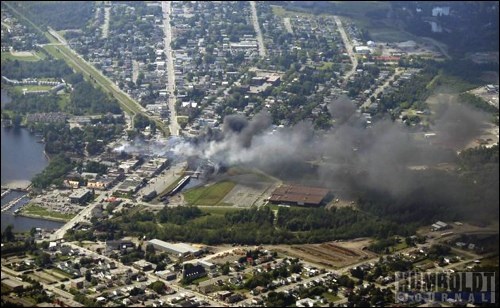As floodwaters slowly recede from Calgary and swollen rivers in Saskatchewan return to normal, the issue of emergency preparedness looms over almost all others.
In a disaster situation a few minutes can be the difference between life and death, and so cities in Saskatchewan are taking proactive steps to ensure they're ready in the event of an emergency. Recently the city of Weyburn announced the launch of the province's first emergency alert system, designed to automatically alert residents in a disaster situation via phone, email or text message.
Here in Humboldt there is an emergency plan in place, but efforts are ongoing to improve its efficiency and speed.
"We've looked at a few different products over the last six months," said Humboldt fire chief Mike Kwasnica.
"This is increasingly important to Humboldt," said Mayor Malcolm Eaton. "We've seen several situations over the past few years, whether it's flooding or tornado issues. It's very important that the city has good emergency response plans for a variety of circumstances."
Under the current system residents would be contacted manually by a member of the Emergency Measures Organization (EMO) or by one of its volunteers. A pre-recorded message would also be broadcast on radio in Humboldt, Melfort and Saskatoon.
"Humboldt has a very good emergency preparedness plan," said EMO coordinator Tracey Shewciw. "We'd basically do everything the computer does, but do it manually."
The computer Shewciw is referring to is part of a federal pilot program that has been running in eight communities in Saskatchewan since last summer. The system automates all of the processes that today would be done manually, saving precious time in getting the word out.
"It's all automated, all on the Internet," Shewciw said. "You just punch in the emergency-train derailment with chemicals, tornado or what have you, and the system tells you who should be involved, what equipment is needed, where to get the equipment and contact information to do all of that."
The program is not fully operational at this time ("there are still some bugs so we're a little behind," Shewciw said), and there is no guarantee that it will be anything more than a pilot project.
"It is a phenomenal, phenomenal program, but I can't imagine the cost of the program because it's a pilot brought by the feds so it's hard to say if it would be approved or who would use it," Shewciw said.
EMO was approached about the program independently of the city and there have been no indications as of yet that the city is able or willing to pursue the program beyond its initial test stage, though Eaton said the city is actively considering ways to improve its disaster response program.
Emergency response systems in Saskatchewan mostly remain the purview of 20th century technology. Major cities like Regina and Saskatoon still rely on traditional forms of media like television or radio to deliver critical public service announcements, but these approaches may not be as effective in a world where many people get all of their news through cellphones.
Eaton said the city is committed to improving its digital communications and cited a boil water advisory from last year as an example of disseminating critical information quickly.
"We see the city ramping all of that kind of stuff up over the next little while," he said. "It's important to collect all of the contact information so we can shoot out messages as quickly as possible."
Now Weyburn, a city of comparable size to Humboldt, will be on the cutting edge of disaster planning. It's a bold and ambitious move and civic leaders from across the province will surely monitor the results closely.
A new day in emergency response is on the horizon. How Humboldt will respond is to be seen.




